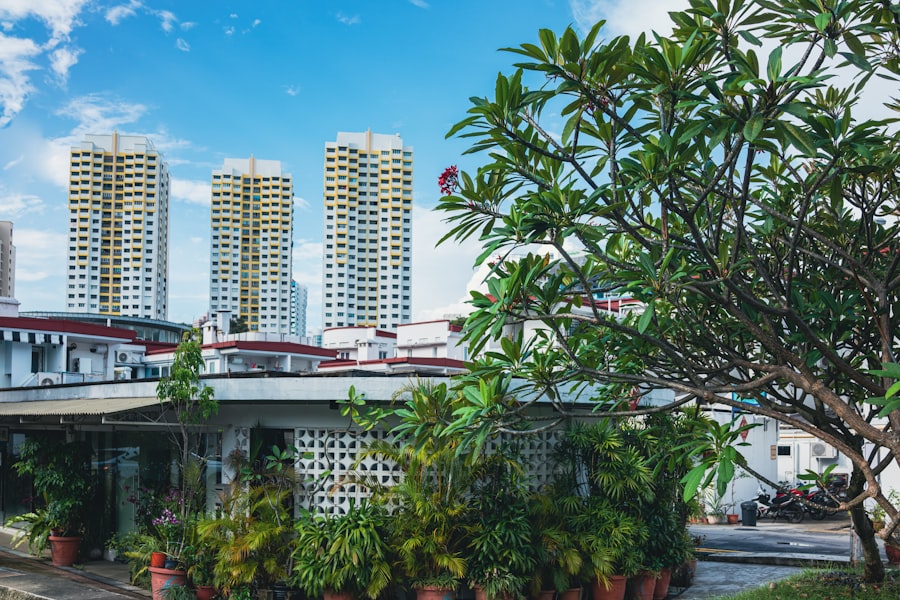Exploring the Beauty of Sebu Island
Description
Sebu Island, a hidden gem in the Philippines, is often overshadowed by its more famous neighbors, yet it offers a unique blend of natural beauty, rich culture, and warm hospitality. Located in the southern part of the archipelago, Sebu is part of the province of South Cotabato and is known for its lush landscapes, pristine waters, and vibrant local communities. The island is characterized by its rolling hills, cascading waterfalls, and serene lakes, making it a paradise for nature lovers and adventure seekers alike.
The island’s name is derived from the word “sebu,” which means “to be calm” in the local dialect, reflecting the tranquil atmosphere that envelops this enchanting destination. The island’s history is as rich as its natural resources. It has been inhabited for centuries by indigenous groups, including the Blaan and T’boli tribes, who have preserved their traditions and customs despite the influences of modernity.
This cultural heritage is evident in the island’s festivals, art, and daily life. Sebu Island is not just a place to visit; it is a living tapestry of stories, traditions, and experiences waiting to be explored. As travelers venture into its depths, they will discover not only breathtaking landscapes but also the warmth of its people and their enduring connection to the land.
Key Takeaways
- Sebu Island is a tropical paradise known for its stunning beaches, rich culture, and diverse wildlife.
- Top attractions and landmarks on Sebu Island include the historic Magellan’s Cross, the iconic Cebu Taoist Temple, and the beautiful Basilica Minore del Santo Niño.
- Outdoor adventures and activities on Sebu Island range from snorkeling and diving in the crystal-clear waters to hiking through lush rainforests and exploring hidden waterfalls.
- Cultural experiences and festivals on Sebu Island offer a glimpse into the vibrant local traditions, including the Sinulog Festival and the Kadaugan sa Mactan.
- The culinary delights of Sebu Island feature a mix of traditional Filipino dishes, fresh seafood, and international cuisine, with must-try specialties like lechon and dried mangoes.
- Sebu Island is home to some of the best beaches in the Philippines, including the white sands of Bantayan Island and the vibrant marine life of Moalboal for snorkeling and diving.
- Wildlife and nature reserves on Sebu Island provide opportunities to encounter unique species like the tarsier and explore the diverse ecosystems of the island.
- Tips for exploring Sebu Island include respecting local customs, trying the street food, and being mindful of the environment by practicing sustainable tourism.
Top Attractions and Landmarks
One of the most iconic landmarks on Sebu Island is Lake Sebu itself, a stunning body of water surrounded by lush greenery and towering mountains. This lake is not only a visual marvel but also a vital resource for the local community. It serves as a source of livelihood for many fishermen and is home to various species of fish, including tilapia and catfish.
Visitors can take a boat ride across the lake, enjoying the serene environment while soaking in the breathtaking views of the surrounding hills. The lake is also dotted with floating cottages where tourists can dine on fresh seafood while enjoying the tranquil ambiance. Another must-visit attraction is the Seven Falls, a series of cascading waterfalls that are among the most beautiful in the region.
Each waterfall has its own unique charm, with some surrounded by lush vegetation and others offering stunning views from elevated vantage points. The Seven Falls can be accessed via a zipline that provides an exhilarating experience while offering panoramic views of the falls and the surrounding landscape. For those who prefer a more leisurely approach, there are well-maintained trails that lead to each waterfall, allowing visitors to immerse themselves in nature’s beauty at their own pace.
Outdoor Adventures and Activities

Sebu Island is a playground for outdoor enthusiasts, offering a plethora of activities that cater to various interests and skill levels. Hiking is one of the most popular activities, with numerous trails winding through the island’s verdant hills and forests. The trails vary in difficulty, making them accessible to both novice hikers and seasoned trekkers.
One notable trail leads to Mount Sumpong, where hikers are rewarded with breathtaking views of Lake Sebu and the surrounding landscape from the summit. The experience of standing atop this peak, surrounded by nature’s grandeur, is truly unforgettable. For those seeking an adrenaline rush, ziplining over the Seven Falls provides an exhilarating experience that combines adventure with stunning scenery.
The zipline stretches over 700 meters and offers a unique perspective of the waterfalls as well as the lush forest below. Additionally, visitors can engage in birdwatching, as Sebu Island is home to various avian species, including the endangered Philippine Eagle. Birdwatching tours are available for enthusiasts eager to spot these magnificent creatures in their natural habitat.
Cultural Experiences and Festivals
| City | Event | Date | Attendance |
|---|---|---|---|
| New Orleans | Mardi Gras | February | 1.4 million |
| Rio de Janeiro | Carnival | February/March | 2 million |
| Edinburgh | Edinburgh Festival Fringe | August | 2.8 million |
The cultural richness of Sebu Island is palpable in its festivals and local traditions. One of the most significant events is the T’nalak Festival, celebrated annually in July to honor the T’boli people and their rich heritage. This vibrant festival showcases traditional dances, music, and crafts that reflect the T’boli’s deep connection to their culture and environment.
Visitors can witness colorful parades featuring intricately designed costumes made from T’nalak fabric, which is woven by skilled artisans using traditional techniques passed down through generations. In addition to festivals, cultural experiences abound throughout Sebu Island. Visitors can engage with local artisans who create beautiful handicrafts such as woven baskets and intricate beadwork.
Workshops are often available for those interested in learning these traditional crafts firsthand. Moreover, community visits provide an opportunity to interact with local families, gaining insight into their daily lives and customs. These experiences foster a deeper understanding of the island’s cultural landscape and create lasting memories for travelers.
The Culinary Delights of Sebu Island
Sebu Island’s culinary scene is a delightful reflection of its diverse culture and abundant natural resources. The island’s cuisine is characterized by fresh ingredients sourced from local farms and waters. One must-try dish is “tinola,” a comforting chicken soup infused with ginger and served with fresh vegetables like papaya and chili leaves.
This dish exemplifies the island’s emphasis on using locally sourced ingredients to create flavorful meals that nourish both body and soul. Seafood lovers will find themselves in paradise on Sebu Island, where fresh catches are prepared in various ways. Grilled fish served with a side of “sinigang,” a sour tamarind soup, is a popular choice among locals and visitors alike.
Additionally, street food stalls offer an array of snacks such as “kwek-kwek,” which are quail eggs coated in orange batter and deep-fried to perfection. Exploring local markets provides an opportunity to sample these culinary delights while interacting with friendly vendors who are eager to share their recipes and cooking tips.
Best Beaches and Water Activities

While Sebu Island may not be as renowned for its beaches as other destinations in the Philippines, it boasts several hidden coastal treasures that are worth exploring. One such beach is Gumasa Beach, known for its powdery white sand and crystal-clear waters. This beach offers a tranquil escape where visitors can relax under swaying palm trees or take leisurely strolls along the shoreline.
The calm waters make it an ideal spot for swimming or simply soaking up the sun. Water activities abound on Sebu Island, with opportunities for snorkeling and diving in nearby coral reefs teeming with marine life. The vibrant underwater ecosystem offers glimpses of colorful fish, sea turtles, and intricate coral formations.
Kayaking along the coastline provides another way to appreciate the island’s natural beauty while enjoying a peaceful day on the water.
Wildlife and Nature Reserves
Sebu Island is home to diverse wildlife and several nature reserves that protect its unique ecosystems. The Lake Sebu Protected Landscape is one such area that encompasses not only the lake but also surrounding forests and wetlands. This protected area serves as a sanctuary for various species of birds, mammals, and reptiles, making it an ideal destination for wildlife enthusiasts.
Birdwatching tours often lead visitors through this lush landscape, where they can spot endemic species such as the Philippine Eagle and various migratory birds. In addition to birdwatching, nature lovers can explore hiking trails within these reserves that offer opportunities to observe wildlife in their natural habitats. Guided tours led by knowledgeable local guides provide insights into the flora and fauna of Sebu Island while ensuring responsible wildlife viewing practices are followed.
These experiences foster a deeper appreciation for the island’s biodiversity and highlight the importance of conservation efforts in preserving these precious ecosystems.
Tips for Exploring Sebu Island
When planning a trip to Sebu Island, it’s essential to consider several practical tips to enhance your experience. First and foremost, it’s advisable to visit during the dry season, which typically runs from November to April. This period offers pleasant weather conditions ideal for outdoor activities and exploration without the hindrance of heavy rainfall.
Transportation on Sebu Island can be limited; therefore, renting a motorbike or hiring a local guide can be beneficial for navigating between attractions efficiently. Local guides not only provide transportation but also enrich your experience with their knowledge of the island’s history and culture. Lastly, embracing local customs and traditions will enhance your visit significantly.
Learning a few basic phrases in the local dialect can go a long way in building rapport with residents. Additionally, participating in community events or workshops allows travelers to connect with locals on a deeper level while gaining insights into their way of life. Sebu Island offers an array of experiences that cater to diverse interests—from breathtaking natural landscapes to rich cultural encounters—making it an ideal destination for those seeking adventure off the beaten path in the Philippines.
If you’re a fan of mobile games like Sebu Island, you may also enjoy playing My Talking Tom. This game offers a similar interactive experience with cute virtual pets. Check out this best/2023/05/28/my-talking-tom-apk-mod-unlimited-money-v7-6-0-3422/’>article to learn more about the mod version of My Talking Tom with unlimited money.
FAQs
What is Sebu Island?
Sebu Island is an island located in the Philippines, specifically in the Visayas region. It is the second largest island in the Philippines and is known for its beautiful beaches, rich culture, and vibrant marine life.
What are the popular attractions in Sebu Island?
Some popular attractions in Sebu Island include the historic Magellan’s Cross, the stunning Kawasan Falls, the vibrant Sinulog Festival, and the beautiful beaches of Moalboal and Bantayan Island.
What is the climate like in Sebu Island?
Sebu Island has a tropical climate with two distinct seasons: the dry season from November to April, and the wet season from May to October. The island experiences warm temperatures throughout the year, making it an ideal destination for beachgoers.
What activities can visitors do in Sebu Island?
Visitors to Sebu Island can enjoy a wide range of activities such as snorkeling, diving, island hopping, hiking to waterfalls, exploring historical sites, and experiencing the local culture through festivals and traditional performances.
How do I get to Sebu Island?
The most common way to get to Sebu Island is by flying into Mactan-Cebu International Airport, which is the main gateway to the island. From there, visitors can take a taxi or a bus to reach their desired destination on the island.





